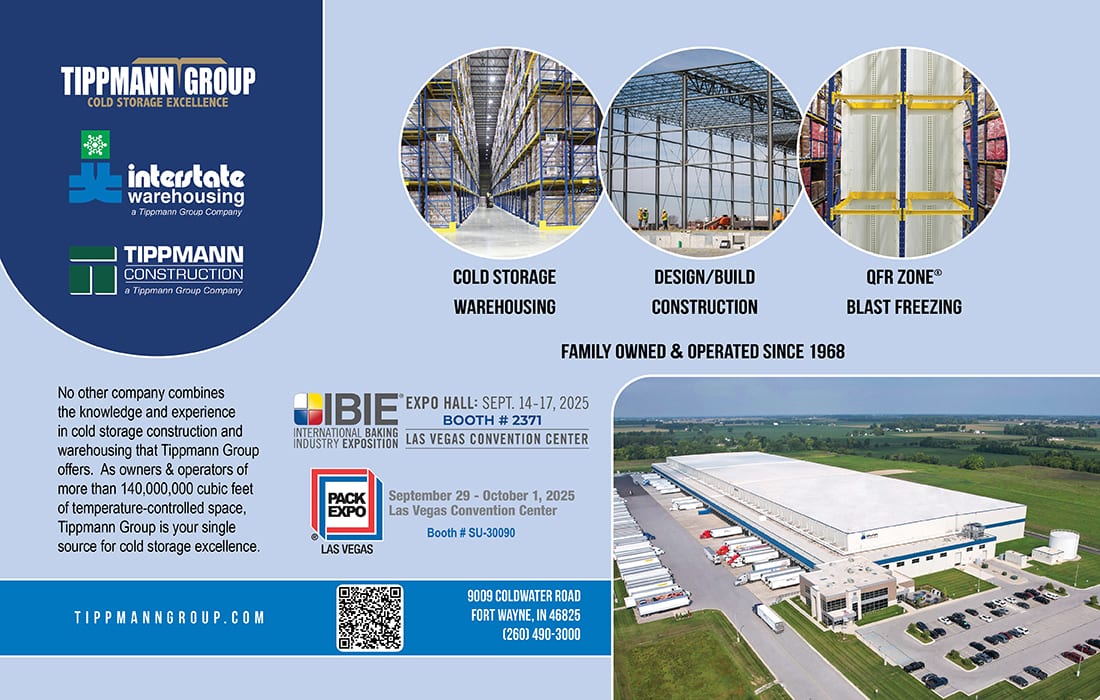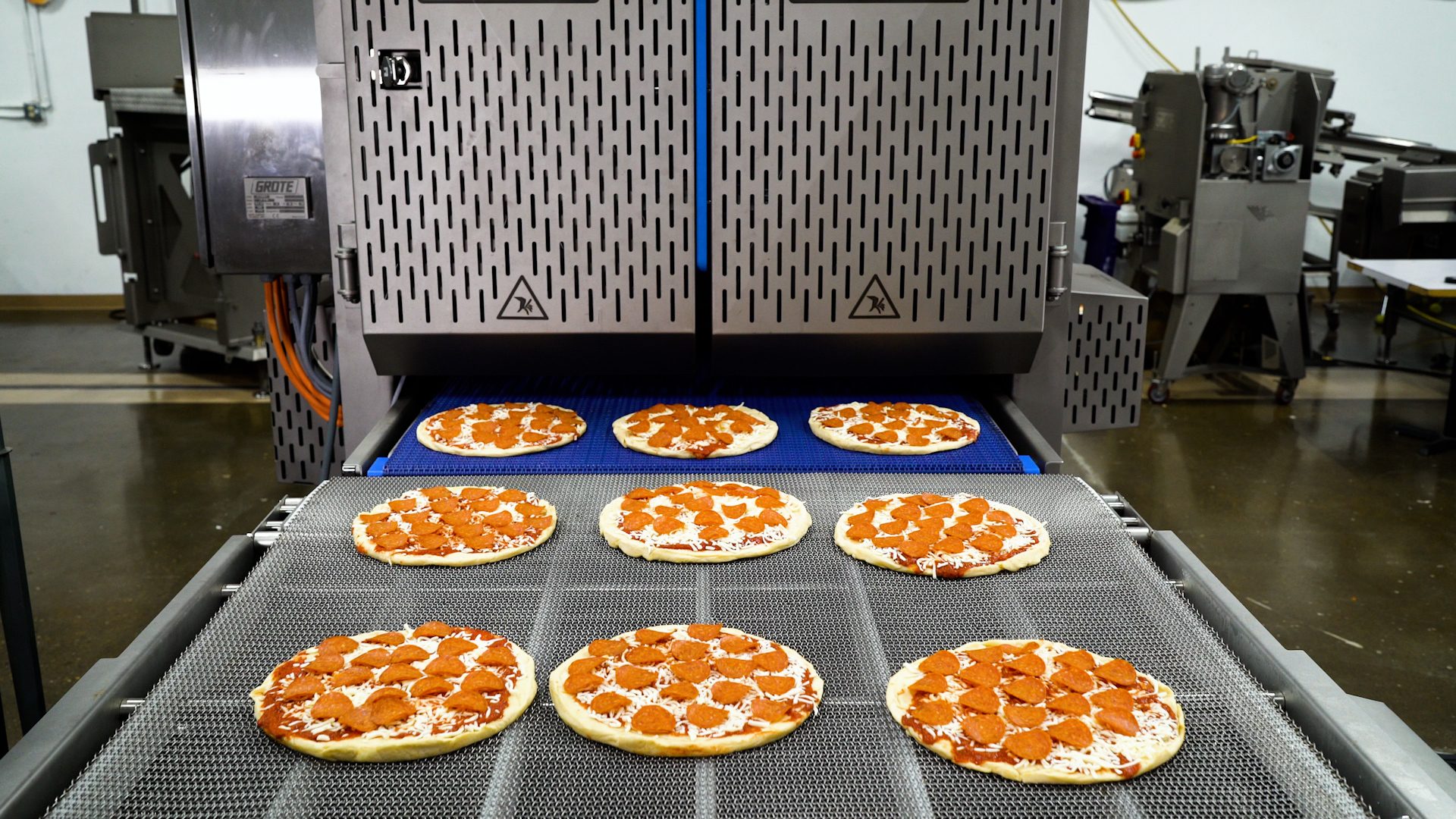COLD STORAGE
Outlook Bright for Cold Storage Sector as Capacity Climbs
About 75% of all cold storage facilities in the U.S. are more than 25 years old, making the sector ripe for consolidation, modernization and new investment. Courtesy of Hispanolistic / E+ / Getty Images.
While construction has slowed from pandemic highs, there’s still demand driving cold chain development.
By Kelley Rodriguez
Although slowed from pandemic highs, demand for cold storage is still strong in the U.S., particularly as food companies seek logistical efficiencies and modern food-safe facilities.
An April report from MetLife Investment Management projects institutional interest and capital to continue to flow into the cold storage sector in 2025 and beyond, due to the National Council of Real Estate Investment Fiduciaries (NCREIF) Expanded Property Index (NPI), which made it easier for institutions to track the performance of the cold storage sector. NCREIF revised their definitions for certain property types and specifications, including cold storage, for inclusion in core funds.
As capacity continues to come online, cold foods processors and manufacturers have more flexibility in where to place their pallets.
By the end of the fourth quarter 2024, vacancy rates climbed to over 5%, just above the long-term average, according to analysis by MetLife.
The report expects vacancies to peak in 2026, with the greatest supply pressures in markets including Dallas, Chicago and Jacksonville.
In its 2024 annual report, Lineage said storage revenue from same warehouses – those owned, leased or managed for at least two comparable years – decreased 3.1% or $56 million compared to 2023, due to lower average occupancy.
“Beginning in the second half of 2023, customers began rationalizing inventory levels in response to continued higher interest rates and inflation, which is driving changes in customer demand. As our customers adjust to these new demand levels, we have seen lower throughput volume across our network,” the report said.
However, Lineage reported non-same warehouse revenues increased $76 million or 16.3% compared to 2023, including approximately $58 million from acquisitions and $55 million from recently completed greenfield and expansion projects.
After its IPO one year ago, Lineage has been busy, announcing a $247 million deal with Tyson Foods to acquire four of their warehouses and build two new, highly-automated sites for the poultry processor; and breaking ground on projects in the Netherlands.
While the pharmaceutical market is a key player, another demand driver continues to be consolidation by processing operations that require cold storage, and mid-to-large food manufacturers looking to centralize and streamline distribution.
Americold launched three projects in 2024: Kansas City, DFW and Australia, with developments in New Zealand and Port Saint John, Canada, already announced this year.
The company’s first import-export hub to be built in Canada is a joint project with CPKC and DP World, expected to open next year.
“Throughout 2024 we made significant progress on several productivity, efficiency and development initiatives that allowed us to deliver strong full-year results, including 11.4% growth in Global Warehouse Same Store NOI and 16% growth in Adjusted FFO per share. In addition, we are especially pleased with the progress we made on improving warehouse services margins throughout the year. Less than two years ago, we communicated our goal to increase same store handling NOI (net operating income) by $100 million, and we surpassed that goal in 2024 with a $125 million year-over-year improvement,” George Chappelle, CEO of Americold Realty Trust, said in the 2024 annual report.
The Global Cold Chain Alliance’s annual top 25 rankings of the association’s largest temperature-controlled warehousing and logistics members by total capacity showed its members own or operated over 8 billion cubic feet of cold storage, a 10% increase YOY.
“The GCCA Top 25 list is one method by which we monitor acquisitions, business growth and warehouse capacity fluctuations around the world. The increase in capacity at the largest cold chain operations in the world has continued and investments in expansion projects show legacy operations, as well as new market entrants, are still optimistic about future demand in the sector,” said Sara Stickler, president and CEO of the GCCA.
The cold chain features prominently in economic and security policy discussions around the world.
“There is a strong and growing appreciation of the critical and varying roles our members play in making sure food arrives to market safely and reliably,” Stickler said. “One example is GCCA’s input regarding the use of innovative technology and processes in border control operations, which improves traceability and removes delays at borders. We are proud of the breakthrough we helped to secure in the U.S. to remove the arbitrary ‘50-mile rule’ for the location of approved inland Inspection Houses. Additionally, we are continuing our campaign of support for the FRIDGE Act in the U.S. Congress, which funds investment in infrastructure and cold storage business growth in key export markets.”
About 75% of cold storage infrastructure in the U.S. is at least 25 years old, with over a quarter of facilities built in the ‘60s or older, according to recent data available from CoStar, a commercial real estate research group.
Projects opened this year include:
- Warehouses opened in Florida for Karis Cold and FreezPak;
- A 15,000-pallet addition by Central Storage and Warehouse, in Wisconsin.
- A Vertical Cold site in Kansas City; and
New construction announced in the first half of 2025 includes a second phase of construction by Interstate to expand their Kingman, Arizona, facility. Phase 2 will add 24,000 pallet positions.


